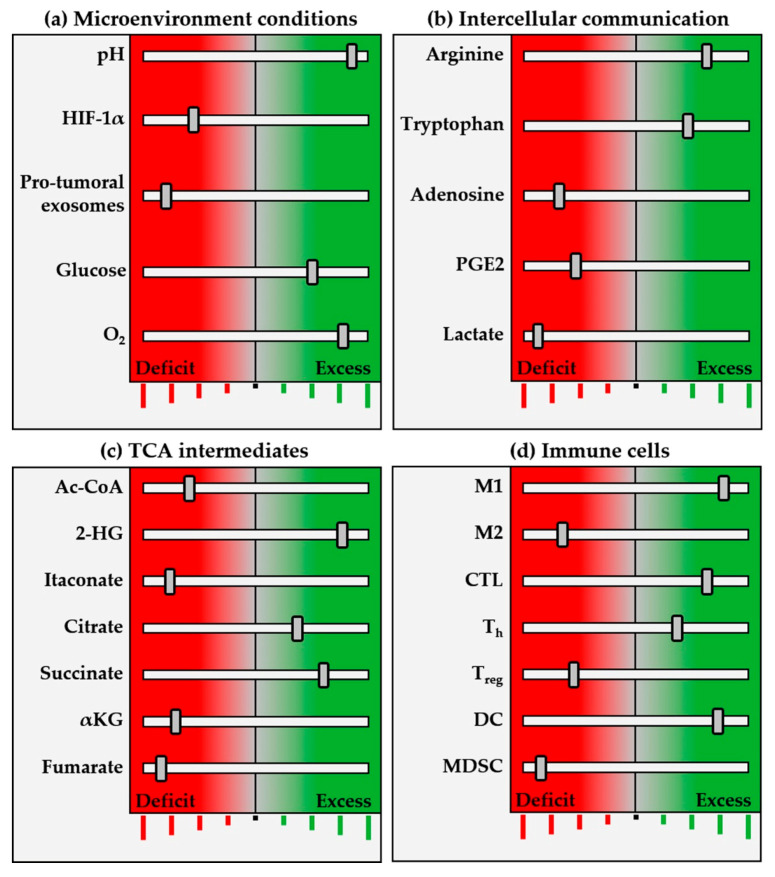Figure 2.
Schematic representation of pro-inflammatory (antitumor) immunometabolic and cellular profile. Immune system programming begins at the perinatal stage, matures through environmental stimulation and is regulated by a balanced network that includes genetic and epigenetic profile, microbiota, hypothalamic–pituitary–adrenal (H–P–A) axis, sleep, diet and many other elements. Within this network, metabolism amplifies or inhibits immune function, determining physiological, adaptive or altered responses by (a) microenvironmental conditions, such as pH, oxygenation, etc.; (b) intercellular communication with chemokines, lactate, PGE2, etc.; and (c) TCAis, such as succinate, α-KG and others. The figure shown represents different frequency (inhibition/activation) bands, with an equilibrium position in the center, decreased activity towards the left (red), and increased towards the right (green). Like an equalization system, this network selects the immune “frequency band” determined by fine-tuning the elements making up the expanded system. This determines the immune response pattern, defined by cell subpopulations (d), their functionality, cytokine secretion and intercellular communication relationships within the TME. This schema introduces a concept that must be investigated and determined separately for each type of immune response, depending on specific physiological or pathophysiological situations, thus providing a spectrum of frequencies in which the greater the number of immune equalizer bands, the finer the tuning and function. Accumulated knowledge in oncological biology has brought into vision an immunometabolic equalizer with pro-/anti-tumor, pro-/anti-inflammatory, hot/cold tumor and pro-/anti-therapeutic-related functions. The precise immunometabolic alterations of each patient and tumor emerge as promising biological markers to guide immunotherapy treatments. The proposed immunometabolic equalizer schema represents crosstalk between the balance of different metabolic regulation levels (a–c), capable of determining the balance between pro-/anti-inflammatory cell populations, and unblocking immune checkpoints. The equalizer is not autonomous, but is connected to an amplifier in the form of macroenvironment elements such as the H–P–A axis, microbiota, stress, diet, exercise and medications, which in turn have their own equalization controls, in a fractal-like manner.

